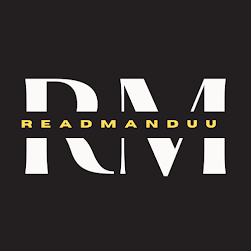Finding the right auto insurance can be hard. There are many choices out there. I'll help you understand what affects your insurance rates. You'll also learn how to compare quotes well.

To find the best auto insurance in Oregon, look at a few things. Your driving history, what kind of car you have, and what coverage you need are important. Knowing these helps you choose the right oregon auto insurance policy.
Key Takeaways
- Understand the factors that influence your auto insurance rates.
- Learn how to compare insurance quotes effectively.
- Discover the importance of considering your driving history and vehicle type.
- Find out how to make an informed decision when choosing an insurance policy.
- Get tips on selecting the best auto insurance coverage for your needs.
Understanding Auto Insurance in Oregon
Auto insurance in Oregon is very important for drivers. It's key to know about the insurance market, the need for good coverage, and how Oregon's rates compare to others. This helps drivers make smart choices.
The Oregon Insurance Market Overview
Oregon's auto insurance market has both local and national providers. The state's rules shape the market. They affect what coverage is needed and how companies work here.
Why Quality Coverage Matters for Oregon Drivers
Good coverage is more than just the minimum. It protects you from accidents and other dangers. Oregon's roads can be risky, so you need full coverage.
Key benefits of quality coverage include:
- Financial protection against accidents and theft
- Coverage for medical expenses from accidents
- Protection against uninsured or underinsured drivers
How Oregon Rates Compare to Neighboring States
Oregon's insurance rates are affected by many things. These include the state's economy, road conditions, and rules. Looking at Oregon's rates compared to Washington and California shows the area's competitive insurance market.
| State | Average Annual Premium |
|---|---|
| Oregon | $1,300 |
| Washington | $1,400 |
| California | $1,800 |
This shows Oregon's rates are pretty good. It's important to shop around for the best deal on good coverage.
Oregon Auto Insurance Minimum Requirements
To drive in Oregon, you must know the auto insurance rules. Oregon law says all drivers must have a certain amount of insurance to drive legally.
Liability Coverage Minimums
Liability coverage is key in Oregon's insurance rules. It has two parts: Bodily Injury Liability and Property Damage Liability.
Bodily Injury Liability Requirements
Oregon drivers must have Bodily Injury Liability coverage. It must be at least $25,000 per person and $50,000 for all people in an accident. This helps pay for medical costs and other damages if you're at fault.
Property Damage Liability Requirements
The Property Damage Liability in Oregon must be at least $20,000 per accident. It covers damages to other people's property, like cars or buildings, if you're at fault.
Personal Injury Protection (PIP) Requirements
Oregon is a PIP state. Drivers must have Personal Injury Protection coverage. PIP pays for medical costs and lost wages for you and your passengers, no matter who's at fault. The minimum PIP coverage is $15,000 per person.
Uninsured/Underinsured Motorist Coverage Rules
Oregon drivers must also have Uninsured/Underinsured Motorist coverage. It must be at least $25,000 per person and $50,000 per accident for bodily injury. This coverage helps if you're hit by someone without insurance or not enough insurance.
Penalties for Driving Without Insurance in Oregon
Driving without insurance in Oregon has big penalties. You could get fined up to $1,000, have your license suspended for a year, and have your car taken away. You'll also need to show proof of insurance to the Oregon DMV to get your driving rights back.
Factors Affecting Auto Insurance Rates in Oregon
Knowing what affects auto insurance rates in Oregon is key for drivers. Many things can change how much you pay for insurance. Knowing these can help you choose the best insurance for you.
Demographic Factors
Demographic factors are big in setting auto insurance rates. These include age, gender, and if you're married.
Driving History and Record
Your driving history is very important for insurance rates. This includes any traffic tickets or accidents you've been in.
Vehicle Type, Age, and Safety Features
The car you drive matters a lot for insurance rates. Cars that cost more or have special features can change your rates. Cars with safety features might cost less.
Location Within Oregon
Where you live in Oregon also changes your insurance rates. This is because of the difference between city and country living. Some places are riskier than others.
Credit Score Impact on Premiums
Your credit score also affects your insurance rates. People with better credit scores are seen as safer to insure.
Best Car Insurance Companies in Oregon
The top car insurance companies in Oregon have good rates, full coverage, and great service. It's key to look at what each company offers.
State Farm: Coverage Options and Benefits
State Farm is huge in the US, with lots of coverage for Oregon drivers. They have liability, collision, and comprehensive coverage. They also have many agents for personal service.
"State Farm is a trusted name in insurance, offering reliable coverage and exceptional customer support." - Insurance Review
GEICO: Competitive Rates and Service
GEICO is known for low rates and easy online use. Oregon drivers get 24/7 customer support and discounts for the military and good students.
https://www.youtube.com/watch?v=ZFVOu_C3kCw
Progressive: Innovative Features for Oregon Drivers
Progressive is ahead in insurance, with usage-based insurance through Snapshot. This lets drivers lower their rates by driving safely.
Allstate: Protection Options and Local Presence
Allstate has many protection options for Oregon drivers, like roadside assistance and rental car coverage. Their local agents help make policies fit your needs.
USAA: Military and Family Benefits
USAA helps military members and their families with good rates and full coverage. They have flexible payment plans for military needs.
Oregon-Based Insurance Providers
Oregon also has local insurance companies. They offer personal service and local knowledge. This makes them a good choice for Oregon drivers.
How to Find Affordable Auto Insurance in Oregon
Finding cheap auto insurance in Oregon is more than just looking at prices. It's about finding the right coverage for your budget. As a driver in Oregon, you have many choices to make.
Effective Comparison Shopping Strategies
Shopping around is key to finding affordable auto insurance quotes Oregon. Compare rates from different companies. Look for Oregon insurance companies and their reputations.
Use online tools to make it easier. These tools let you get quotes from many insurers at once. This way, you can see rates and options easily.
Online Quote Tools and Resources
Online quote tools are great for Oregon drivers. They make getting quotes fast and simple. Many companies have these tools on their websites, or you can use independent sites.
Make sure to give accurate info when using these tools. This includes your driving history, vehicle, and what coverage you need.
Working with Independent Agents in Oregon
Independent insurance agents in Oregon are also helpful. They work with many companies and can help pick the best policy. They know a lot about insurance and can guide you.
Bundling Insurance Policies for Maximum Savings
Bundling insurance policies can save you money. Many companies give discounts if you buy more than one policy from them. This can lower your premiums a lot.
Timing Your Insurance Purchase
When you buy insurance can also affect your rates. Look for good deals during certain times or special offers. Also, keep your credit score high and drive safely to get better rates.
Comparing Auto Insurance Quotes in Oregon
Looking at auto insurance quotes in Oregon is more than just finding the cheapest one. It's about knowing what makes up a policy. You want to find the best value for your needs.
What to Look for Beyond the Premium
The first thing you notice is the premium. But, it's important to look at more than that. Think about the coverage, customer service, and extra features.
Key factors to consider beyond the premium include:
- Deductible amounts and how they impact your out-of-pocket expenses
- Coverage limits and whether they adequately protect your assets
- Exclusions and limitations that might affect your coverage
- The insurance company's reputation for handling claims and customer service

Understanding Deductibles and Their Impact
Deductibles are key in insurance costs and what you pay out-of-pocket for claims. A higher deductible lowers your premium but raises your claim costs.
Finding a deductible that's affordable and a premium that fits your budget is important.
Evaluating Coverage Limits for Your Situation
Coverage limits show the max your insurance pays for a claim. It's vital to ensure you have enough protection.
Think about your finances, asset value, and risk level when choosing coverage limits.
Reading the Fine Print: Exclusions and Limitations
Knowing what's not covered or limited in your policy is as important as what is. Exclusions and limitations can really affect your insurance's value.
Read the fine print carefully to avoid surprises when you file a claim.
Customer Service Reputation Considerations
Your insurance company's customer service and claims handling can greatly impact your experience. Look up their reputation through reviews and ratings.
A company known for good customer service will likely make your experience better.
Coverage Options Beyond the Minimum Requirements
To make sure you're safe on the road, look into more auto insurance options. Oregon's minimum insurance is a good start. But, more options can give you extra protection against different dangers.
Comprehensive Coverage Benefits
Comprehensive coverage helps protect your car from damage not caused by crashes. It covers theft, vandalism, and damage from natural disasters.
Protection Against Theft
If your car gets stolen, this coverage helps you get it back. It's very useful in places where cars often get stolen.
Weather and Natural Disaster Coverage
Oregon's weather can change quickly, with rain and wildfires. This coverage helps pay for repairs or a new car if your car gets damaged.
Collision Coverage Explained
Collision coverage is key for your car's safety. It covers damage from crashes, no matter who's to blame. It keeps your car in good shape and your money safe.
Gap Insurance for New and Leased Vehicles
Gap insurance is a must for new or leased cars. It pays the difference if your car is totaled and you still owe money on it.
Roadside Assistance Programs
Roadside assistance is a big help in emergencies. Many insurance companies offer it. They can tow your car, give you fuel, or unlock your car.
Rental Car Reimbursement Options
Rental car reimbursement is handy too. If your car is in the shop, this coverage pays for a rental. It helps you not miss a beat in your day.
Looking into these extra options can make your auto insurance better. Oregon drivers can find the right mix of protection for their needs. This way, they're ready for anything the road throws their way.
Special Auto Insurance in Oregon Considerations
Oregon's weather and land shape make driving tricky. It's key to know how these affect your car insurance.
Coverage for Oregon's Extreme Weather Events
Oregon faces many extreme weather events. Wildfires, floods, and landslides can harm your car. The right insurance is crucial.
Wildfire Protection
Wildfires can badly damage cars. Make sure your insurance covers this. Check your policy for wildfire protection.
Flood and Landslide Coverage
Floods and landslides also affect Oregon. Your insurance might cover these. But, always check your policy.

Rural vs. Urban Insurance Differences
Insurance rates and coverage differ in rural vs. urban Oregon. Rural areas face unique risks.
- Rural areas have higher rates due to animal collisions and repair service limits.
- Urban areas face higher theft and vandalism risks.
Insurance for Classic and Specialty Vehicles
Classic or specialty vehicle owners need special insurance. These vehicles need policies that match their value and needs.
- Agreed value coverage lets you and your insurer agree on your vehicle's value. This ensures fair compensation if your vehicle is lost.
- Specialty vehicle insurance may also cover spare parts, restoration costs, and other unique needs.
SR-22 Requirements for High-Risk Drivers
High-risk drivers must file an SR-22 form. This proves they have insurance. Knowing SR-22 rules is important.
- High-risk drivers need higher liability limits.
- SR-22 filings are needed for drivers with past infractions like DUIs or many traffic tickets.
Insurance for Rideshare Drivers in Oregon
Rideshare drivers in Oregon need special insurance. Regular car insurance might not cover accidents while driving for a rideshare.
Rideshare insurance fills this gap. It ensures you're covered at all times.
Money-Saving Tips for Oregon Drivers
As an Oregon driver, you can save a lot on auto insurance. Use the right discounts and programs to lower your premiums. You don't have to give up coverage to save money.
Available Discounts and How to Qualify
Insurance companies in Oregon offer many discounts. These discounts depend on your driving history, student status, and professional affiliations.
Good Driver Discounts
Keeping a clean driving record is easy. Insurance companies see drivers without accidents or tickets as safer. They give good driver discounts to these drivers.
Student and Senior Discounts
Insurance providers give discounts to students with good grades and seniors. These discounts are great for families with many drivers.
Professional Organization Memberships
Some insurers offer discounts to members of professional groups. If you're in a group, check with your insurer for discounts.
Usage-Based Insurance Programs in Oregon
Usage-based insurance programs track your driving habits. They offer discounts for safe driving. These programs use devices or apps to monitor your driving.
Improving Your Credit Score for Better Rates
In Oregon, your credit score affects your auto insurance rates. A good credit score can get you lower insurance premiums. Pay bills on time, reduce debt, and check your credit report to improve your score.
Defensive Driving Courses Recognized in Oregon
Defensive driving courses improve your driving skills and get you discounts. Oregon accepts many courses for insurance savings.
Vehicle Safety Feature Discounts
Cars with safety features like anti-lock brakes and airbags get discounts. Tell your insurer about these features to get discounts.
Conclusion: Securing the Right Auto Insurance in Oregon
Getting the right auto insurance in Oregon means knowing the state's rules. You also need to look at what different Oregon auto insurance companies offer.
When you compare auto insurance quotes, think about a few things. Look at the coverage limits, deductibles, and how good the customer service is. This will help you find the best Oregon auto insurance.
Choosing reputable Oregon auto insurance companies is key. They should have good rates and new features. This way, you get the protection you need and feel secure.
FAQ
What are the minimum auto insurance requirements in Oregon?
In Oregon, you need to have certain auto insurance. This includes liability coverage for injuries and property damage. You also need personal injury protection and coverage for uninsured drivers.
How do I compare auto insurance quotes in Oregon?
To compare auto insurance quotes in Oregon, look at more than just the price. Check deductibles, coverage limits, and what's not covered. Also, see how good the company's customer service is. You can use online tools, talk to agents, or contact companies directly.
What factors affect auto insurance rates in Oregon?
Many things can change your auto insurance rates in Oregon. Your age, gender, and marital status matter. So does your driving record and the type of car you drive. Where you live and your credit score also play a role. Knowing these can help you find ways to save money.
Are there any discounts available for auto insurance in Oregon?
Yes, Oregon offers many discounts for auto insurance. You can get discounts for being a good driver, a student, or a senior. There are also discounts for certain jobs and car safety features. Using a device to track your driving and taking defensive driving courses can also lower your rates.
What is the importance of uninsured/underinsured motorist coverage in Oregon?
Uninsured/underinsured motorist coverage is very important in Oregon. It helps if you're hit by someone who doesn't have enough insurance. This coverage can cover medical costs, lost wages, and other damages.
Can I get insurance for a classic or specialty vehicle in Oregon?
Yes, Oregon allows you to insure classic or specialty vehicles. Some companies specialize in these vehicles. They might offer agreed value coverage, which ensures you get the full value of your vehicle if it's totaled.
How do I know if I'm eligible for SR-22 requirements in Oregon?
In Oregon, you might need an SR-22 if you've had certain driving offenses. An SR-22 proves you have the minimum insurance. Check with your insurance provider to see if you need one.
What is the difference between comprehensive and collision coverage?
Comprehensive coverage covers damages not from a crash, like theft or natural disasters. Collision coverage pays for damages from a crash, no matter who's at fault.









0 Comments
If you have any doubts please let me know.